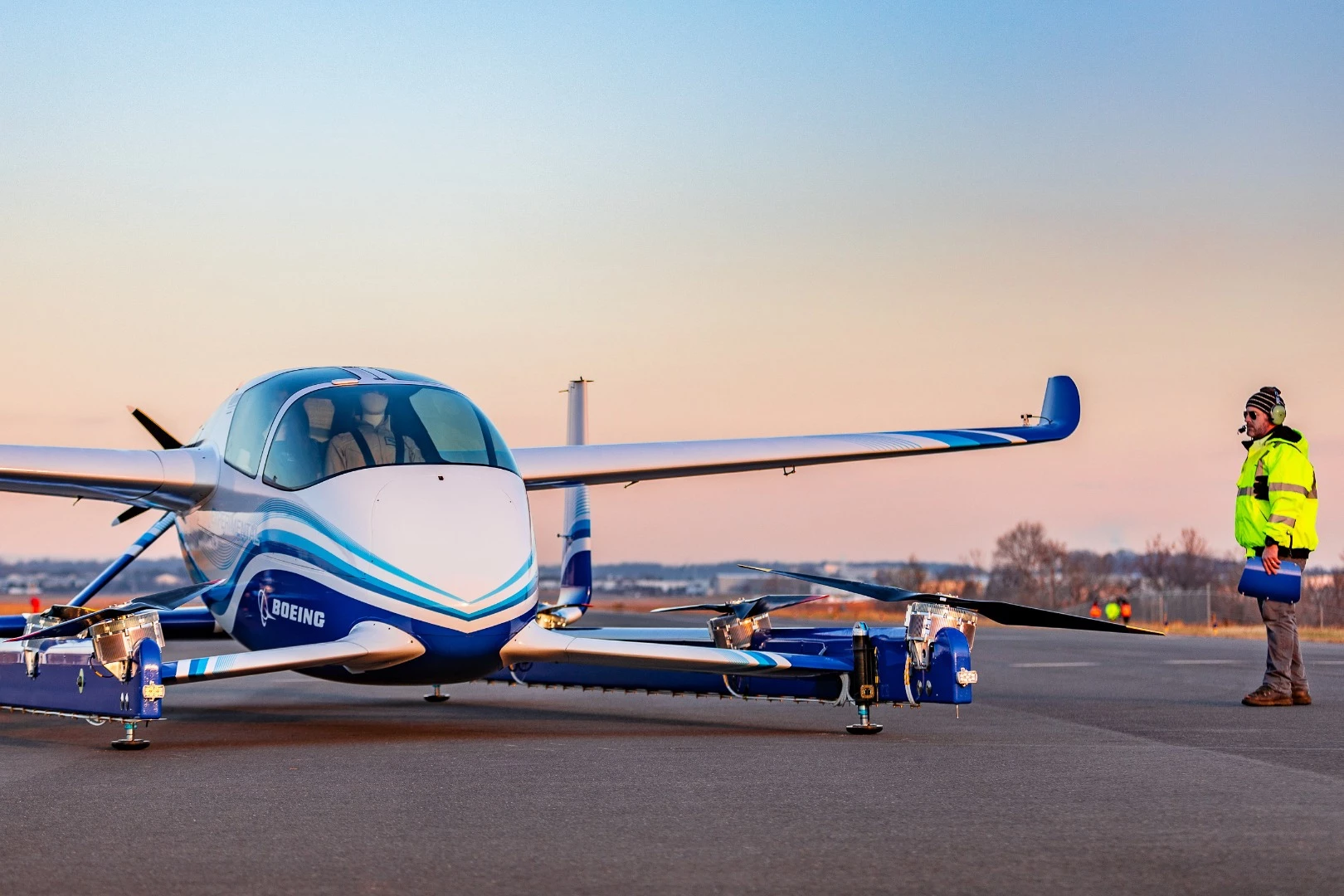Given how many groups are now developing electric vertical takeoff and landing (eVTOL) aircraft, it shouldn't come as a surprise that aerospace giant Boeing has been working on some of its own. This Tuesday, one of the prototypes made its first flight.
Known for now simply as the passenger air vehicle (PAV), the aircraft is part of the company's Boeing NeXt urban air mobility project. It's designed to fly autonomously, performing helicopter-like vertical takeoffs and landings, but switching over to faster and more efficient fixed-wing flight while en route.
It measures 30 feet long by 28 feet wide (9.1 by 8.5 m), and has a claimed battery range of up to 50 miles (80.5 km). Among other things, Boeing NeXt is also developing an electric cargo air vehicle (CAV), which can carry a payload of up to 500 lb (227 kg) – it made its first indoor test flight last year, with its outdoor testing scheduled to begin sometime this year.
This week's PAV flight was a test of the aircraft's autonomous functions and ground control systems, in which it successfully took off, hovered in place, and then landed. It was not carrying any passengers at the time. Subsequent flights are planned to evaluate its fixed-wing flight capabilities, along with its ability to smoothly transition between vertical and forward flight.
Source: Boeing




